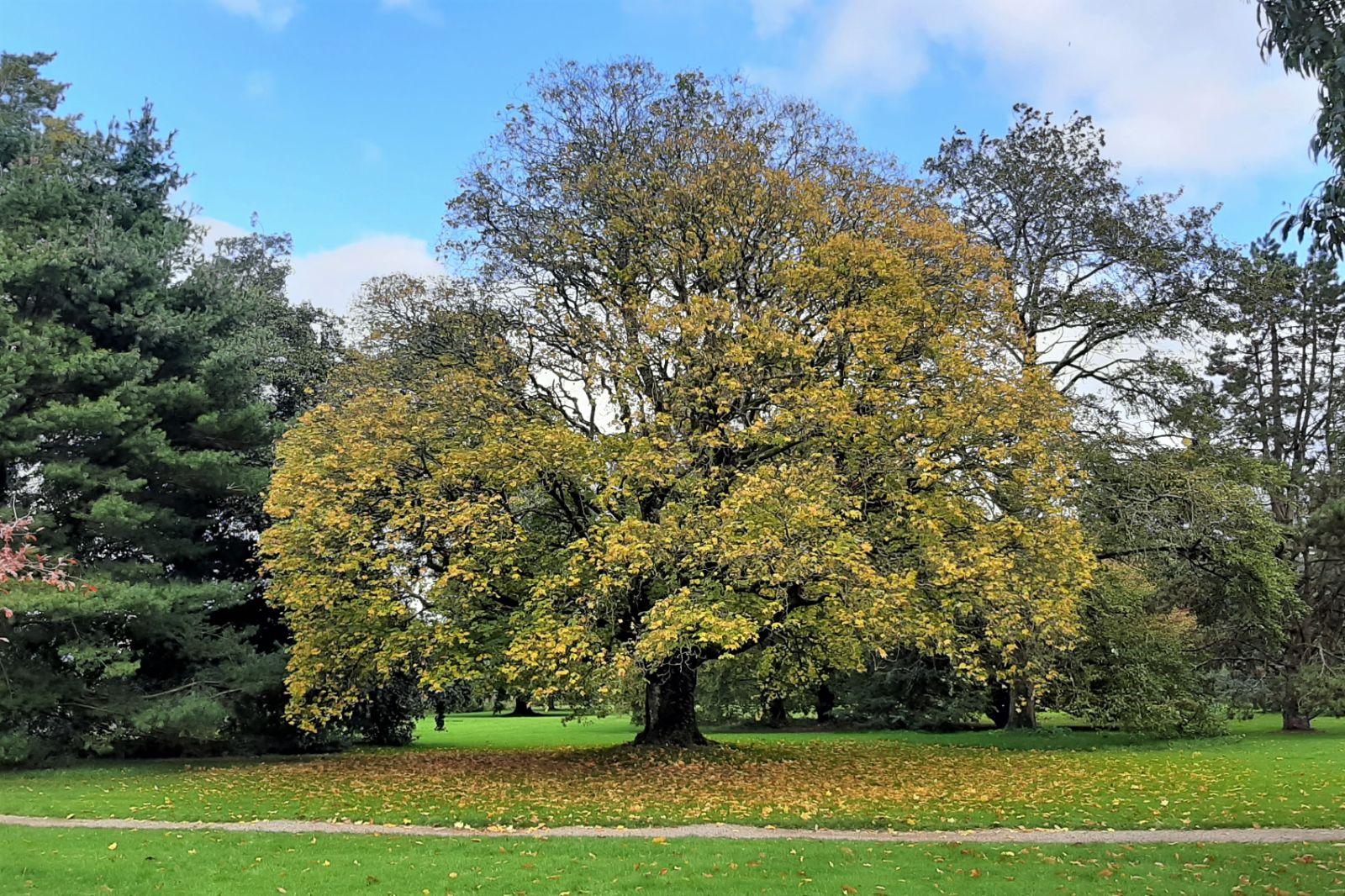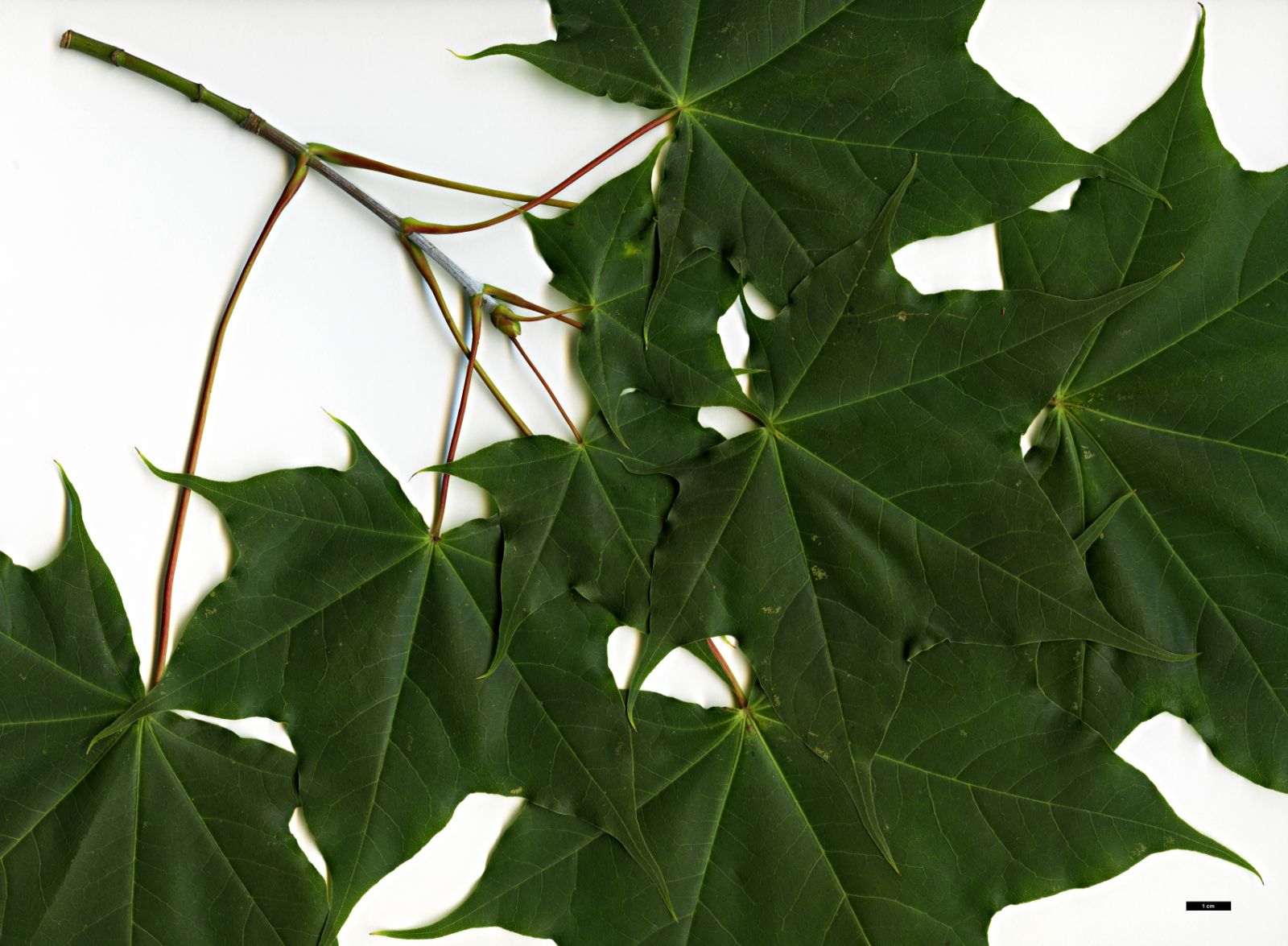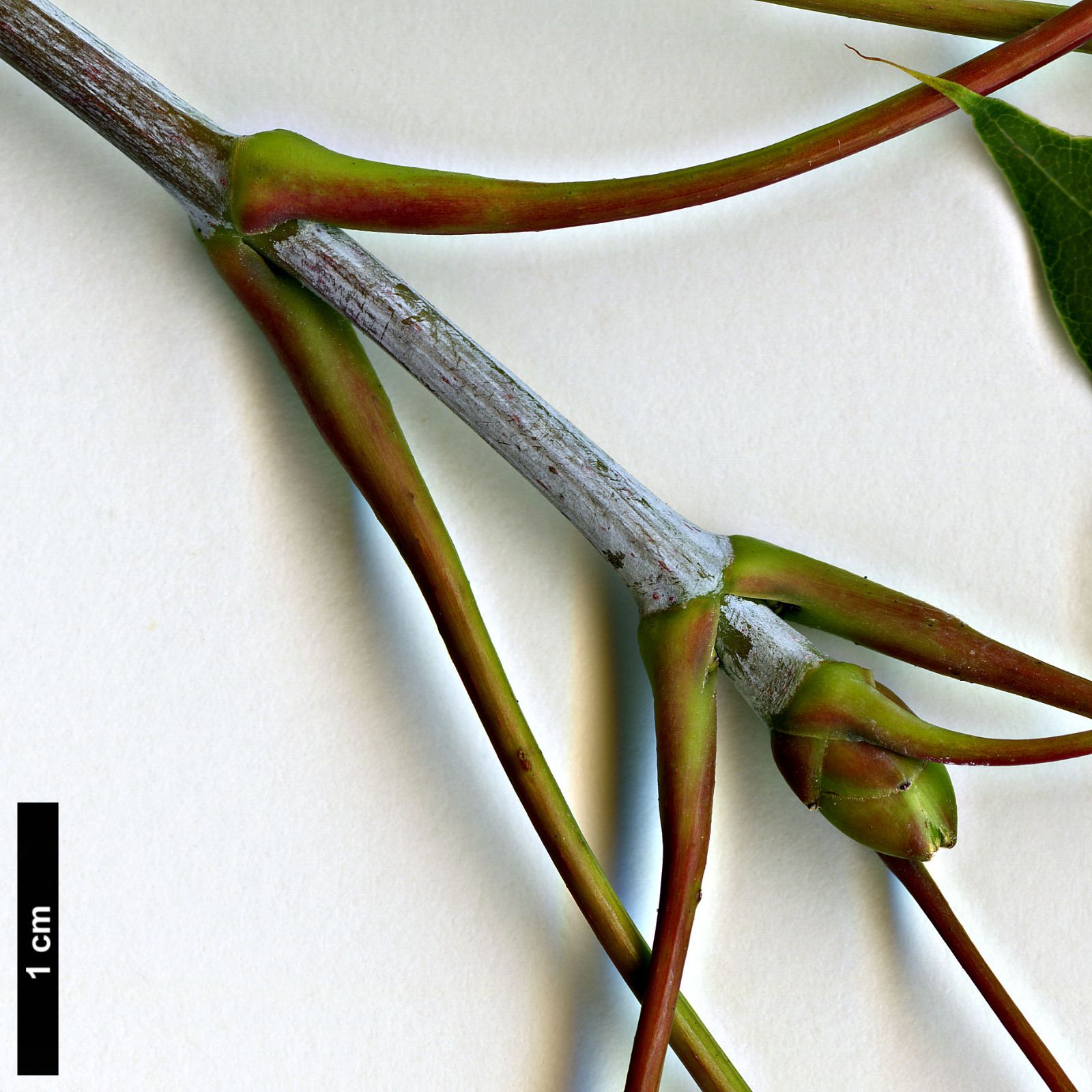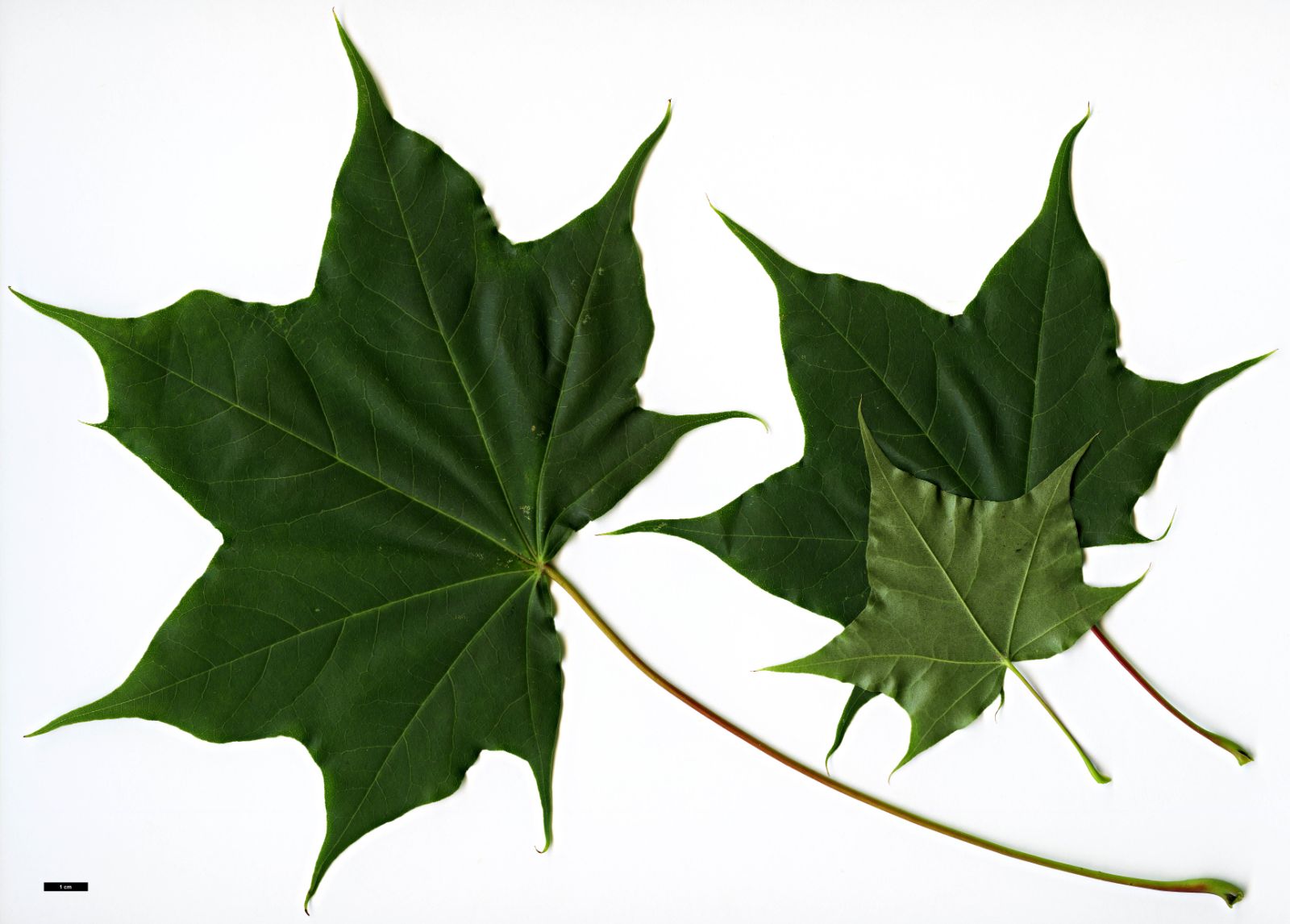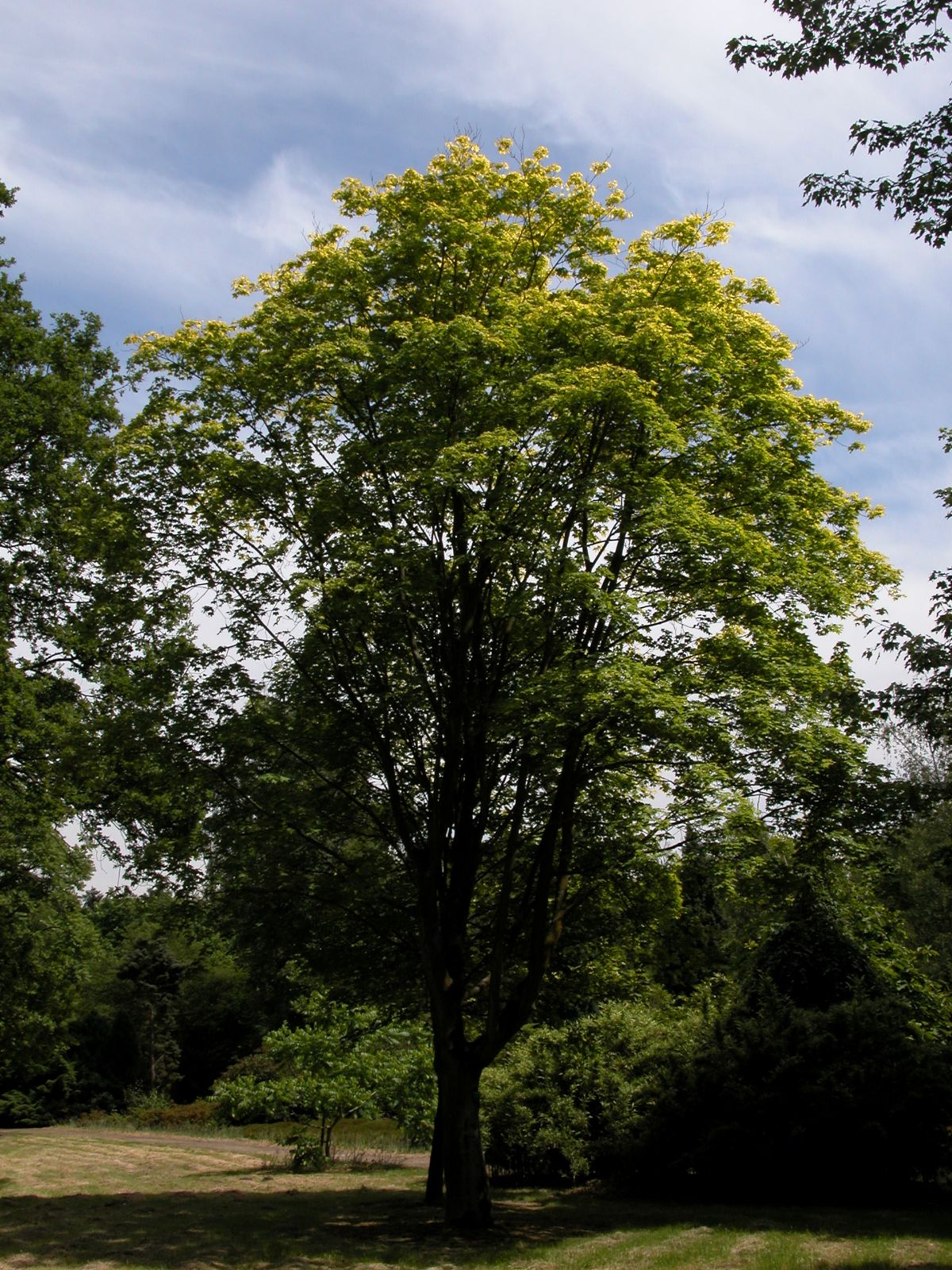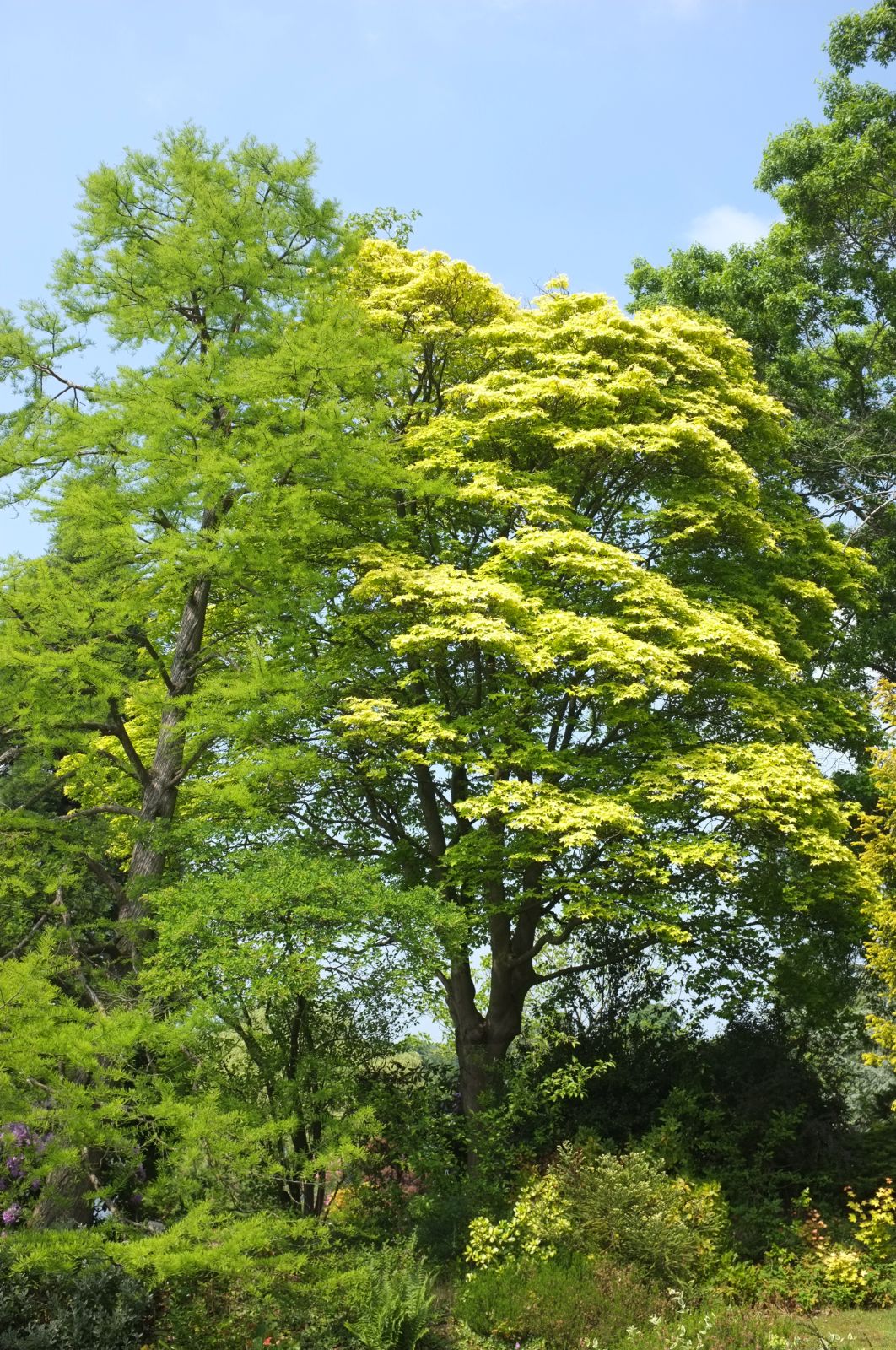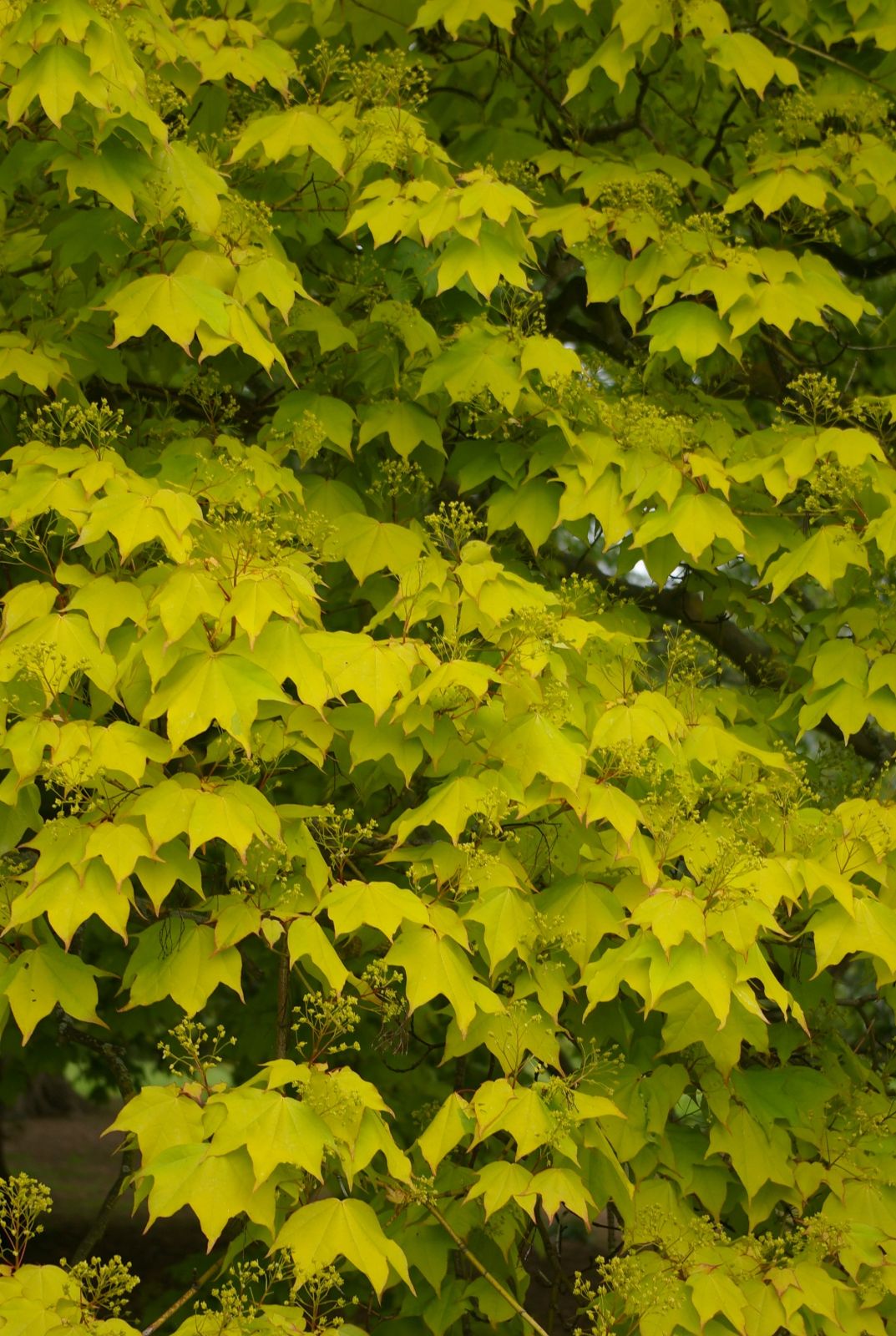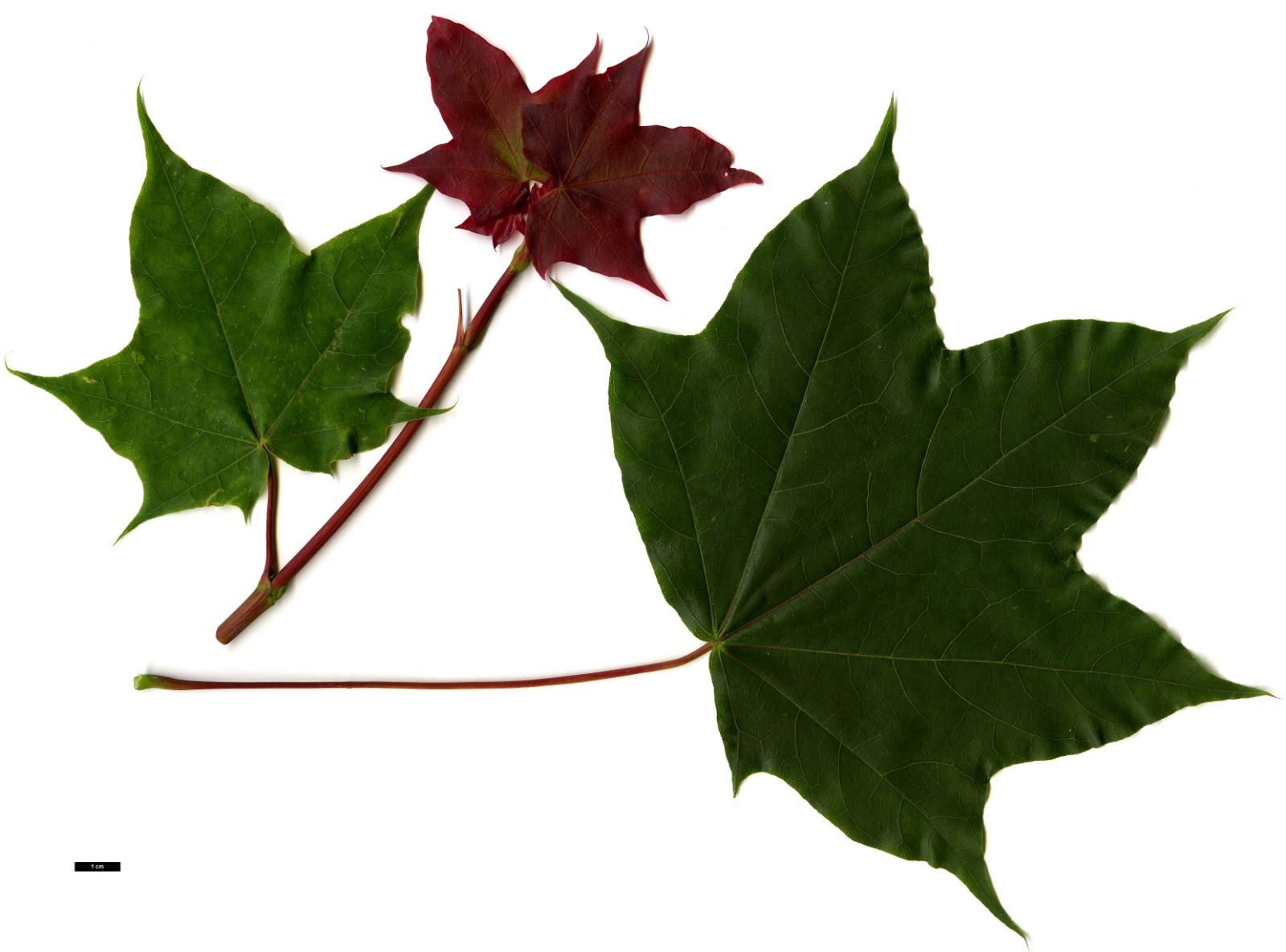Acer cappadocicum
Sponsor
Kindly sponsored by
The Wynkcoombe Arboretum
Credits
Dan Crowley (2020)
Recommended citation
Crowley, D. (2020), 'Acer cappadocicum' from the website Trees and Shrubs Online (treesandshrubsonline.
Genus
- Acer
- Sect. Platanoidea
Common Names
- Cappadocian Maple
- Caucasian Maple
- Coliseum Maple
- Colchican Maple
Synonyms
- Acer laetum C. A. Mey.
- Acer pictum colchicum Hort.
- Acer cappadocicum var. cultratum (Wall.) W. P. Fang
- Acer cappadocicum var. indicum (Pax) Rehder
- Acer cultratum Wall.
- Acer laetum C. A. Mey.
- Acer laetum var. cultratum (Wall.) Pax
- Acer lobelii Ten. var. indicum Pax.
- Acer pictum var. colchicum (Gordon) Henry
Infraspecifics
Other taxa in genus
- Acer acuminatum
- Acer amplum
- Acer argutum
- Acer barbinerve
- Acer buergerianum
- Acer caesium
- Acer calcaratum
- Acer campbellii
- Acer campestre
- Acer 'Candy Stripe'
- Acer capillipes
- Acer carpinifolium
- Acer 'Cascade'
- Acer caudatum
- Acer ceriferum
- Acer chapaense
- Acer chienii
- Acer circinatum
- Acer cissifolium
- Acer × conspicuum
- Acer cordatum
- Acer coriaceifolium
- Acer × coriaceum
- Acer crataegifolium
- Acer davidii
- Acer diabolicum
- Acer distylum
- Acer divergens
- Acer duplicatoserratum
- Acer elegantulum
- Acer erianthum
- Acer 'Esk Flamingo'
- Acer fargesii
- Acer fenzelianum
- Acer flabellatum
- Acer forrestii
- Acer franchetii
- Acer × freemanii
- Acer fulvescens
- Acer 'Gimborn'
- Acer ginnala
- Acer glabrum
- Acer 'Gold Coin'
- Acer granatense
- Acer grandidentatum
- Acer griseum
- Acer heldreichii
- Acer henryi
- Acer × hillieri
- Acer hookeri
- Acer hyrcanum
- Acer japonicum
- Acer kawakamii
- Acer komarovii
- Acer laevigatum
- Acer laurinum
- Acer laxiflorum
- Acer lobelii
- Acer longipes
- Acer macrophyllum
- Acer mandshuricum
- Acer maximowiczianum
- Acer maximowiczii
- Acer metcalfii
- Acer miaotaiense
- Acer micranthum
- Acer 'Mindavi'
- Acer 'Minorient'
- Acer miyabei
- Acer miyabei × campestre
- Acer monspessulanum
- Acer morifolium
- Acer 'Mozart'
- Acer oblongum
- Acer obtusifolium
- Acer okamotoanum
- Acer oliverianum
- Acer opalus
- Acer orientale
- Acer palmatum
- Acer papilio
- Acer pauciflorum
- Acer pectinatum
- Acer pensylvanicum
- Acer pentaphyllum
- Acer pentapotamicum
- Acer pictum
- Acer pilosum
- Acer pinnatinervium
- Acer platanoides
- Acer platanoides × amplum
- Acer platanoides × truncatum
- Acer × pseudoheldreichii
- Acer pseudoplatanus
- Acer pseudosieboldianum
- Acer pubinerve
- Acer pycnanthum
- Acer rubescens
- Acer rubrum
- Acer rufinerve
- Acer saccharinum
- Acer saccharum
- Acer sempervirens
- Acer 'Serpentine'
- Acer serrulatum
- Acer shenkanense
- Acer sieboldianum
- Acer sikkimense
- Acer 'Silver Cardinal'
- Acer 'Silver Ghost'
- Acer sinense
- Acer sinopurpurascens
- Acer spicatum
- Acer stachyophyllum
- Acer taronense
- Acer tataricum
- Acer tegmentosum
- Acer tenellum
- Acer tetramerum
- Acer tibetense
- Acer tonkinense
- Acer triflorum
- Acer truncatum
- Acer tschonoskii
- Acer turkestanicum
- Acer tutcheri
- Acer ukurunduense
- Acer velutinum
- Acer wardii
- Acer 'White Tigress'
- Acer wilsonii
- Acer × zoeschense
A deciduous tree to 25(–30) m. Bark greenish-grey when young, turning grey but remaining smooth with age. Branchlets glabrous, purplish-red to greenish-yellow, sometimes glaucous bloomed, turning brown and woody only after several years. Buds ovoid, with 5 to 8 pairs of imbricate scales. Leaves broadly pentagonal in outline, base cordate, (5–) 7-lobed to halfway or less, 4–10 × 6–20 cm, lobes triangular to ovate, apically acuminate, margins entire, upper surface bright green, lower surface glossy green, glabrous except for tufts in vein axils; petiole 3–12 cm long, green to red, glabrous, often grooved, broadest at base, exuding a milky sap when broken; autumn colour clear yellow. Inflorescence, corymbose, erect, few to many flowered. Flowers yellowish, 5-merous, usually andromonoecious, pedicels slender, sepals oblong, 0.4–0.5 cm long, petals obovate, as long as sepals, stamens 8, inserted in the middle or outside of the nectar disc. Samaras 3–6(–7) cm long, wings spreading nearly horizontally. Nutlets flattened. Flowering in May, with unfolding leaves, fruiting in September to October. (Yaltirik 1967; Browicz 1982; Krüssmann 1984; van Gelderen et al. 1994; Xu et al. 2008; Mohtashamian et al. 2017; van Welzen et al. 2017).
Distribution Armenia Azerbaijan Bhutan China Southern Xizang, northwestern Yunnan Georgia India Assam, Sikkim, Jammu-Kashmir Iran Nepal Pakistan Turkey
Habitat Temperate mixed forests up to 3000 m asl.
USDA Hardiness Zone 6-7
RHS Hardiness Rating H6
Conservation status Least concern (LC)
Taxonomic note As treated by van Gelderen et al. (1994), Acer cappadocicum comprised four subspecies: subsp. cappadocicum, subsp. divergens, subsp. lobelii and subsp. sinicum, the latter also including its variety tricaudatum. Here only the Chinese subsp. sinicum is treated within A. cappadocicum, with var. tricaudatum treated at specific rank, as A. shenkanense. This treatment of the Chinese taxa follows Xu et al. (2008), while those of the other taxa follow the regional floras of their respective geographic ranges. This species complex remains poorly understood, with A. cultratum treated within the synonomy of the typical subspecies here, in agreement with Xu et al. (2008), rather than that of subsp. sinicum where it was placed by Browicz (1982) and van Gelderen et al. (1994). Further study of the complex is desirable and would shed greater light on the taxonomic divisions within it.
Named for Cappadocia, the mountainous region of Turkey, which comprises part of the extensive range of the species, Acer cappadocicum was introduced into European cultivation in 1838, apparently via collections made by Carl Anton von Meyer in the Talysh Mountains of Azerbaijan in 1831. von Meyer named his introductions as A. laetum, a synonym that still persists and may be found in more recent literature and on trees in collections. The species was introduced to North America a short time later, in 1846, through plants sent from France by A. Lavelle. (Gregory 2006).
Acer cappadocicum is often confused with Acer pictum in collections, with which it shares a similar leaf shape, however the two can easily be distinguished by the colour of their second year wood. In A. cappadocicum this is green and photosynthetic, often remaining so for several more years, whereas in A. pictum it is brown and woody by the second year. This useful, and oft overlooked character is the cause of much confusion around the identity of numerous cultivated taxa within the section – see the generic account and those of other section Platanoidea species for details.
In at least part of its range, A. cappadocicum reproduces vegetatively, as well as by seed, forming suckering thickets where given the chance. This suckering phenomenon is shared with at least 3 other, unrelated, Caucasian woody species, namely Pterocarya fraxinifolia, Staphylea colchica and Zelkova carpinifolia. However, the tendency for A. cappadocicum to readily produce suckers is somewhat overstated, with most cultivated plants not proving problematic in this regard (Justice, in prep.). Where present, these are often coloured an attractive deep red in youth, and if left will form dense thickets of several stems that appear as individual trees in their own right, as has happened at Eastnor Castle, Herefordshire (T. Christian, pers. comm. 2020).
Relatively frequent in collections, the species is now more typically represented in general horticulture by one of its cultivars, which are also features of the urban environment in some areas. For streets, however, upright forms of the related A. lobelii are often a more appropriate choice. Several relatively recent collections from different parts of the range are now represented in collections. At Kew, plants of FLSX 350 and 418, collected in Iran in 1977 have proved very vigorous and are of comparable size to some trees assumed nearly twice their age. Plants of EPAK 170 and 183, collected in Pakistan in 1995 grow at Wakehurst, while the latter is also at Kew, the Yorkshire Arboretum and now at Westonbirt (graft planted 2018). Two RBG Edinburgh-led expeditions have introduced the species from northeastern Turkey, where it is said to overlap with A. divergens. TUDI 105, collected in 2005 on the Darwin Initiative expedition, is represented at collections including Edinburgh, Scone Palace near Perth (Royal Botanic Garden Edinburgh 2018) and at Westonbirt, where it replaced an early planting of the same species. ENET 32, collected in 2008 from the margins of Picea orientalis woodland, is also at Edinburgh, as well as at Benmore (Royal Botanic Garden Edinburgh 2018). Plants of Georgian origin in cultivation include those at Arboretum Wespelaar, Belgium, the U.S National Arboretum, New York Botanical Garden and The Morris Arboretum, Philadelphia (American Public Gardens Association 2017).
The species prefers a moist, well-drained soil, though is tolerant of a wide range of soil types and where given the space, it makes a most excellent landscape tree. However, formative pruning when young is advised, as many plants produced by the nursery trade are inclined to form somewhat untidy crowns with branches that have a tendency to cross. Though it grafts quite easily, and while many authors advocate grafting it on to A. platanoides, the long term compatibility of grafting green-shooted Platanoidea species on to a brown-shooted species is questionable (C. van Gelderen, pers. comms. 2017). The species is also a big favourite of bark-stripping squirrels. Though young trees often have the vigour to overcome such damage, significant injury to mature trees leaves them somewhat predisposed to secondary pathogens such as honey fungus (Armillaria spp.), which has led to the demise of some of the oldest examples at Westonbirt. The species is evidently very happy in a maritime climate, having naturalised in parts of Britain, with self-sown examples spreading via suckers in southeast England (Stace 2019).
'Aureum'
Synonyms / alternative names
Acer pictum aureum Hort.
Acer laetum f. aureum
Acer truncatum 'Aureum'
Acer truncatum 'Luteo-variegatum'
Awards
Award of Garden Merit
RHS Hardiness Rating: H6
Frely available and widely planted in the United Kingdom, at least, this striking cultivar is slower growing than the typical form of the species (le Hardÿ de Beaulieu 2003). ‘Aureum’ is also said to attain a lesser stature, though several of the tallest examples in Britain have reached over 20 m tall (The Tree Register 2019), suggesting there is ultimately little difference. Its young leaves are initially purple, turning yellow later in spring before turning green in summer, then back to (a weaker) yellow in autumn. It was first introduced by Hesse Nurseries of Weener, Germany, in 1914 (van Gelderen et al. 1994).
'Rubrum'
Synonyms / alternative names
Acer cappadocicum 'Horticola'
Acer cappadocicum f. rubrum (Kirchn.) Rehd.
Acer laetum rubrum Kirchn.
Acer laetum f. horticola Pax
Acer colchicum rubrum
Awards
Award of Garden Merit
RHS Hardiness Rating: H6
A form with young leaves unfurling a deep red, then lightening before turning green. It was first distributed in 1842 by Booth Nurseries, Hamburg (Bean 1976; van Gelderen et al. 1994) and introduced to Britain in 1846, where it has become more common than the typical form in collections and the urban environment. It was in commerce in North America by the 1880s (Jacobson 1996). Bean (1976, p.191) states that ‘similar forms are found wild in Dagestan on the western shores of the Caspian Sea, where, according to Van Volxem, they grow intermixed with the type, with all shades of difference between the two extremes’. With f. rubrum referring to both wild and cultivated forms, it may be argued that this taxon would be better referred to that way, or that cultivated trees should be referred to as a Cultivar Group.
subsp. sinicum Rehd.
Synonyms
Acer cappadocicum var. sinicum Rehder
Acer fulvescens subsp. pentalobum (W. P. Fang & T. P. Soong) W. P. Fang & T. P. Soong Soong
Acer fulvescens var. pentalobum W. P. Fang & T. P. Soong.
Subsp. sinicum differs from the typical subspecies in its smaller (5–8 × 6–8 cm) more narrow and deeply 5-lobed leaves, purple samaras spreading at an acute angle, with shorter (2.5–3 cm) wings, with nutlets nearly flattened and concave on one side. (van Gelderen et al. 1994; Xu et al. 2008).
Distribution
- China – Guizhou, western Hubei, southern Shaanxi, Sichuan, Xizang, Yunnan.
Awards
Award of Merit
Notable for its red new growth, particularly the second flush, subsp. sinicum was first introduced by Ernest Wilson while collecting for Veitch in 1901, and later for the Arnold Arboretum. (Sargent 1913; Sargent 1917). WILS 1009 is represented at RBG Edinburgh by both an original and a grafted plant (T. Christian, pers. comm. 2020), while a graft is also at RBG Kew. Further material was introduced later by George Forrest. A plant taken to be Forrest 29011 was lost from the collection at Westonbirt in 2019 (A. Vry, pers. comm. 2020).
More recent introductions include Lancaster 967 from Sichuan, made in 1981 (Edwards & Marshall 2019), as was CK 106, which grows at the Morris Arboretum, Philadelphia. Numerous introductions involve Lord Howick, while collecting with Bill McNamarra under the H&M code, as well as part of the SICH collecting team. Collections in circulation include H&M 2134 and 2155, both growing at Quarryhill, California, while H&M 1954 grows at Westonbirt and has formed a slightly leggy tree, forced up while growing in proximity to a Fagus sylvatica of significant proportions. Among the five SICH introductions of subsp. sinicum, Charles Erskine’s audit found them growing under a total of 11 names (Erskine 2012)!
Details of the identity of all of the SICH introductions in section Platanoidea were published by The Maple Society in 2015 (Crowley 2015). SICH 0629, 0731, 1329 and 2226 were cited under Acer longipes subsp. longipes by Grimshaw & Bayton (2009), who also included SICH 1107 as A. pictum subsp. macropterum. These all represent A. cappadocicum subsp. sinicum. All but SICH 0629 grow at Kew, with variable performance. A specimen of SICH 0731 appears stunted in its location in the maple collection, while another of the same number in the woodland glade on well irrigated soils is around five times the size. Plants from this same collection also grow strongly at Westonbirt. A single plant of SICH 1329 has formed a fine, broadly spreading tree at Kew, while SICH 0629 appeared upright and happy at RHS Rosemoor in 2014. BCHM 035, also from Sichuan, collected in 2010 from the area inhabited by the Critically Endangered Acer pentaphyllum, grows in collections including the David C. Lam Asian Garden, Vancouver, the Royal Botanic Garden Edinburgh, and Westonbirt, while BCHM 093 is at the David C. Lam Asian Garden, the Royal Botanic Garden Edinburgh, and Bedgebury Pinetum.
A form of subsp. sinicum in which the leaves have only three lobes has been called f. tricaudatum (Rehd.) Rehd.; it was introduced by Wilson in 1901 and again in 1908 (W. 1358) (Bean 1976).
'Tricolor'
RHS Hardiness Rating: H6
A selection with leaves variegated red, pink, and cream when young (Bean 1976a). Arising in France, it is likely no longer in cultivation (van Gelderen et al. 1994).


